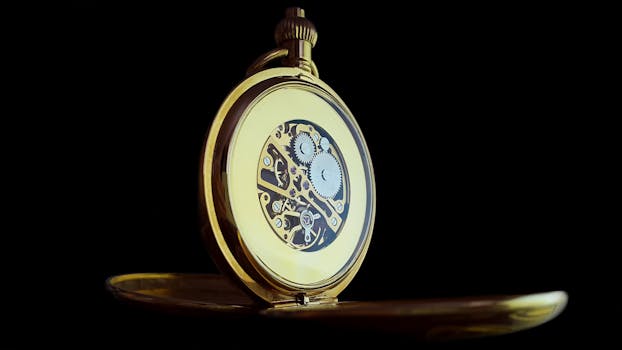
The Timeless Craft: Exploring the Role of Materials in Watchmaking – Gold, Titanium, and Ceramics
Takeaways:
- The choice of materials significantly impacts the durability and aesthetics of watches.
- Gold is valued for its luxury and tradition, while titanium offers strength and lightweight properties.
- Ceramics are becoming increasingly popular for their scratch resistance and modern appeal.
In the world of watchmaking, the choice of materials is paramount. The materials not only determine the watch’s durability and functionality but also its aesthetic appeal and overall value. In this article, we will explore three predominant materials in the watch industry: gold, titanium, and ceramics. Each of these materials has unique properties that cater to different preferences and needs of watch enthusiasts.
Gold: The Classic Choice

1. The Allure of Gold
Gold watches are often seen as status symbols. The rich hue of gold adds a touch of elegance to any timepiece, making it perfect for formal occasions. Watchmakers often use different types of gold, including yellow, white, and rose gold, each offering a unique aesthetic. The choice of gold can influence not only the watch’s appearance but also its market value.
2. Durability and Maintenance
Despite its softness compared to other metals, gold is highly resistant to corrosion. However, it can scratch more easily, requiring careful handling. Many gold watches are plated or alloyed with other metals to enhance durability. Regular maintenance, such as polishing, can help maintain the watch’s luster over time.
3. Craftsmanship and Tradition
Gold watchmaking is often associated with traditional craftsmanship. Many high-end brands focus on intricate designs and artisanal techniques, elevating gold watches to pieces of art. This craftsmanship ensures that gold watches not only tell time but also tell a story.
Titanium: The Modern Marvel

1. Lightweight and Comfortable
Titanium is significantly lighter than gold or stainless steel, making it an excellent choice for those who prefer a more comfortable wear. This lightweight property allows for larger designs without the burden of weight, appealing to sports enthusiasts and everyday wearers alike.
2. Exceptional Durability
Titanium is renowned for its strength and resistance to corrosion and scratches. It can withstand the rigors of an active lifestyle, making it a favored material for dive watches and outdoor timepieces. Moreover, titanium watches often require less maintenance compared to their gold counterparts.
3. Hypoallergenic Properties
Another significant advantage of titanium is its hypoallergenic properties. Individuals with sensitive skin often find titanium to be a suitable option, as it does not cause irritation or allergic reactions, unlike some alloys that include nickel.
Ceramics: The Future of Watch Materials

1. Scratch Resistance and Lightweight
Ceramic watches are highly resistant to scratches, making them ideal for everyday wear. This durability ensures that the watch retains its pristine appearance over time. Ceramics are also lightweight, similar to titanium, which adds to their comfort during wear.
2. Color Variety and Design
Ceramics can be produced in a variety of colors, allowing for unique and personalized designs. This versatility has led to an explosion of creative designs in the watch industry, attracting buyers looking for something distinct and stylish.
3. Modern Aesthetic Appeal
The sleek and modern look of ceramic watches has made them a favorite among fashion-conscious individuals. They often feature minimalist designs that resonate with contemporary tastes, making them suitable for both casual and formal settings.
Conclusion








